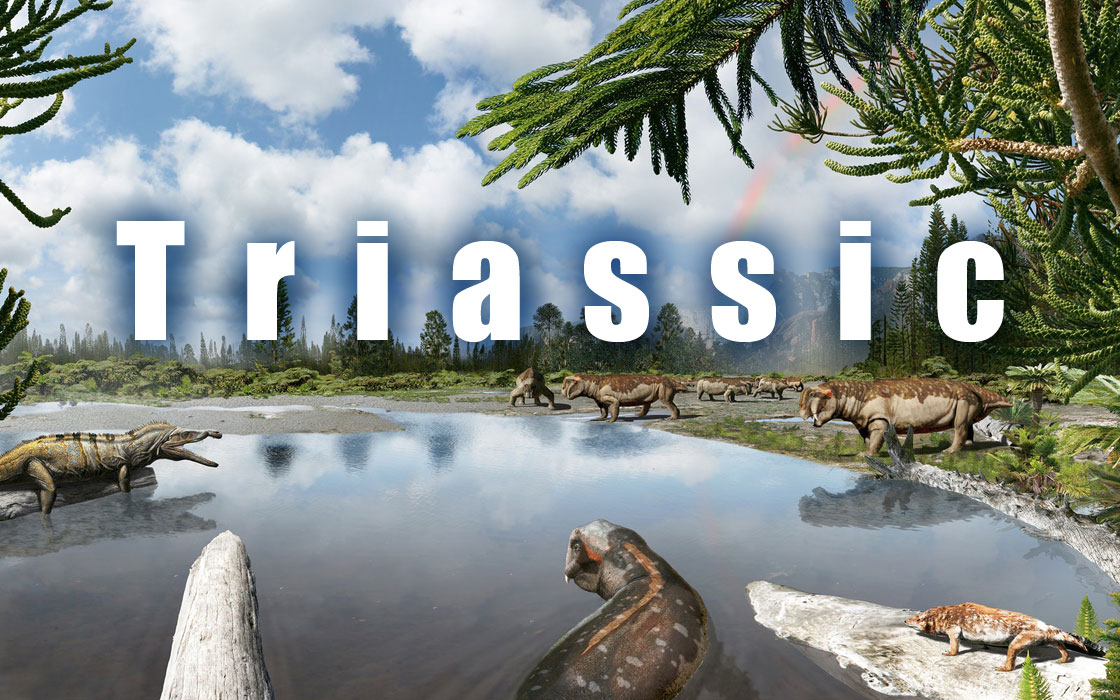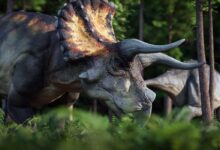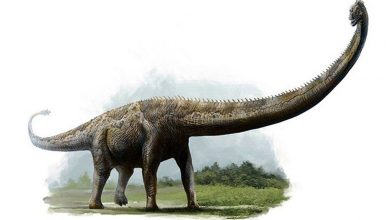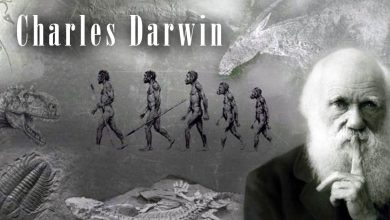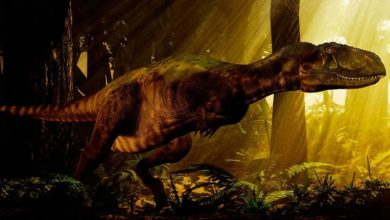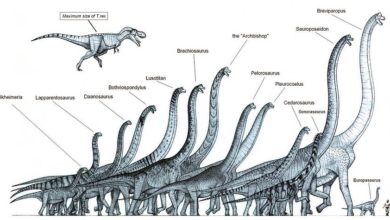Mesozoic Era – Triassic
Triassic Period
The Triassic Period is the first period of the Mesozoic Era. In the stratigraphic table, it initiates a new era in Earth’s history, succeeding the Permian Period (Paleozoic Era). The name originates from the Greek word trias, meaning “threefold.” This name was first introduced in 1835 by the German geologist Friedrich August von Alberti. He aimed to highlight the significance of the distinct tripartite division of sediments from this period, which were discovered in Central Europe.
This name can also refer to the division of the period into three sub-periods. During this time, dinosaurs took their first steps on Earth, and the topography and appearance of our planet were vastly different from today. The natural environment was relatively harsh; however, this did not hinder the rapid development and evolution of the animals living at that time.
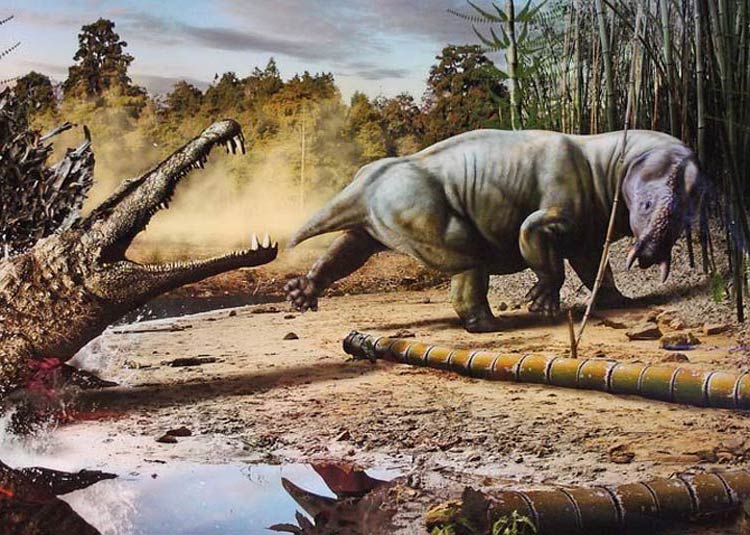
When?
Although the beginning of a new period in Earth’s history is not a single, defined date but a prolonged process, the Triassic Period is estimated to have occurred approximately 252 million to 201 million years ago. It therefore lasted for just over 50 million years and brought many interesting changes to our planet. Below is data from the latest stratigraphic table update.
Triassic Period: 251.9 – 201.4 million years ago
- Late Triassic
- Rhaetian (205.7 – 201.4 million years ago)
- Norian (227.3 – 205.7 million years ago)
- Carnian (237 – 227.3 million years ago)
- Middle Triassic
- Ladinian (241.5 – 237 million years ago)
- Anisian (246.7 – 241.5 million years ago)
- Early Triassic
- Olenekian (249.9 – 246.7 million years ago)
- Induan (251.9 – 249.9 million years ago)
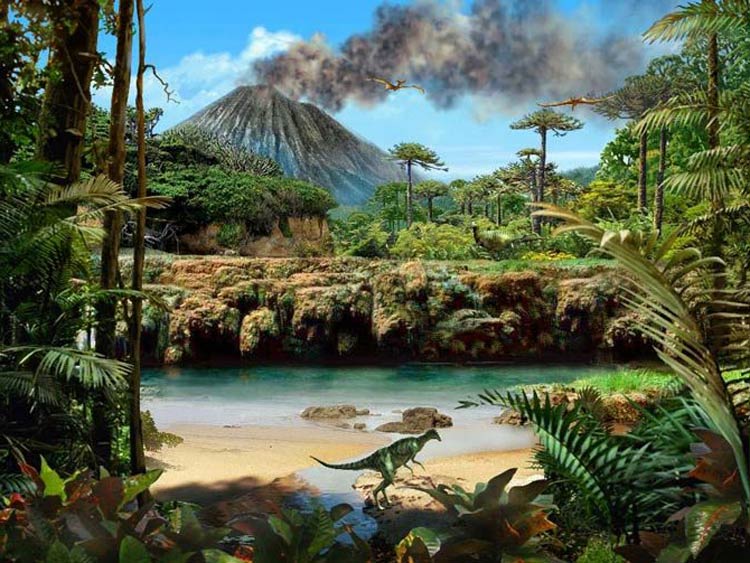
Animals of the Triassic Period
The Triassic Period marked the appearance of the first dinosaurs. In addition to these prehistoric reptiles, amphibians also emerged on Earth. Fossils of these animals continue to be discovered, with archaeological sites located also in Europe.
This was a period of rapid animal development, particularly for temnospondyls (a diverse group of early amphibians). The first giants of this amphibian family appeared during this time, with some reaching sizes of up to 5 meters (16.4 feet) and weighing as much as 500 kg (1,102 lbs), which is incredibly impressive compared to today’s amphibians.
Regarding reptiles, the first crocodiles (Crocodylomorpha) appeared, initially as primarily terrestrial animals.
During the Middle Triassic, mammal-like reptiles (Synapsida) were the dominant group. Dinosaurs, in practice, only truly emerged in the Late Triassic. It was then that they diversified into specific groups: saurischian dinosaurs (including sauropods and theropods) and ornithischian dinosaurs. The first flying reptiles, the pterosaurs (Pterosauria), also appeared.
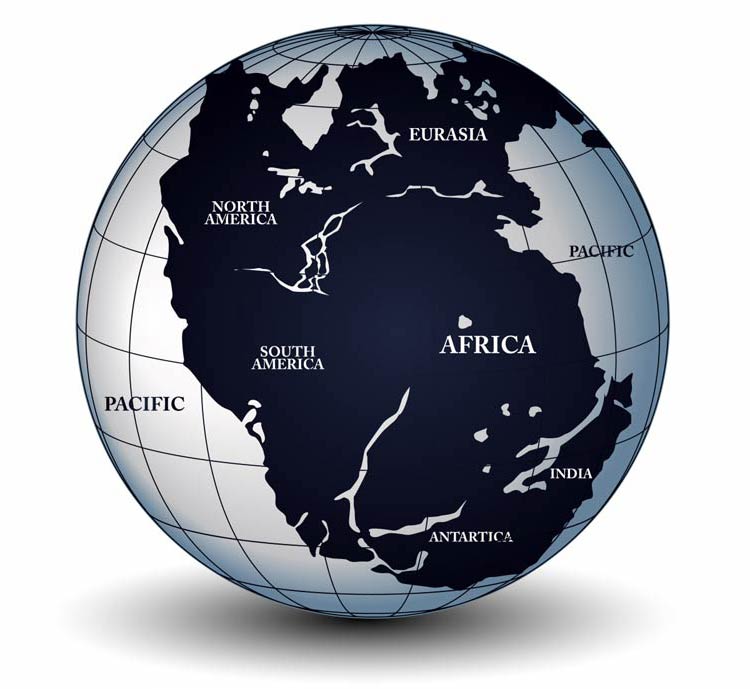
Mammals Among Dinosaurs
Towards the end of the Triassic Period, small mammals also began to roam our planet. They likely evolved from mammal-like reptiles (Synapsida). These creatures were the first to develop features such as the growth of the dentary bone at the expense of other jaw bones, and the differentiation of teeth.
These creatures represent an evolutionary success, largely due to the development of increasingly practical physical traits and their ability to inhabit cooler climatic zones.
Animals could exist in lower temperatures because, at some point in their development, they evolved homeothermy (warm-bloodedness). Subsequent stages of evolution also involved creatures with more efficiently functioning metabolisms.
Although by the Late Triassic we can speak of creatures that strongly resembled mammals, true mammals (Mammalia) only appeared around the Triassic-Jurassic boundary. These creatures were warm-blooded and existed over a very wide geographical area, though their diversity was limited.
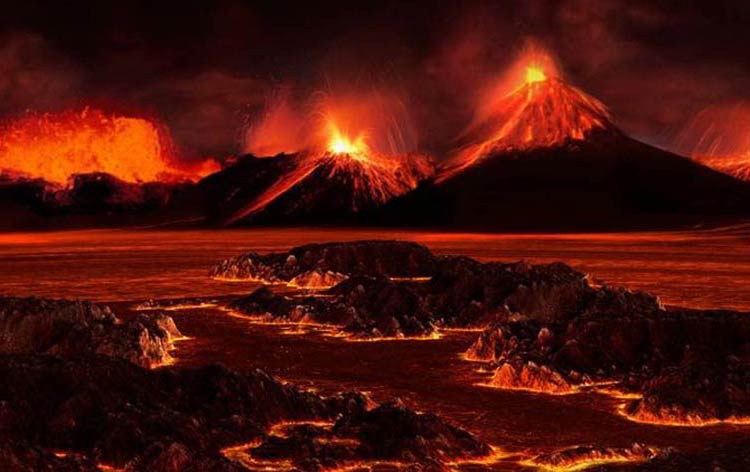
The First Seafood
Life also actively developed in the water. The Triassic Period saw the emergence of numerous orders of marine invertebrates, which were new compared to forms from the previous era. Bivalves (Bivalvia) experienced very rapid development. Snails (Gastropoda) also became increasingly common, and ammonites (Ammonoidea), popular today as fossils, were a very numerous group.
The first corals (Anthozoa) also appeared in the seas and oceans. Sponges (Porifera) and bryozoans (Bryozoa) were less common. Coral reefs were not widespread, but in the Middle Triassic, we can speak of the first Triassic reefs (some of the oldest are located in Poland). The first sea urchins (Echinoidea) also appeared, though they were not particularly common and only occurred in regular forms. Over time, common small sharks (Selachimorpha) also appeared in the seas, and eventually, large groups of marine reptiles developed.
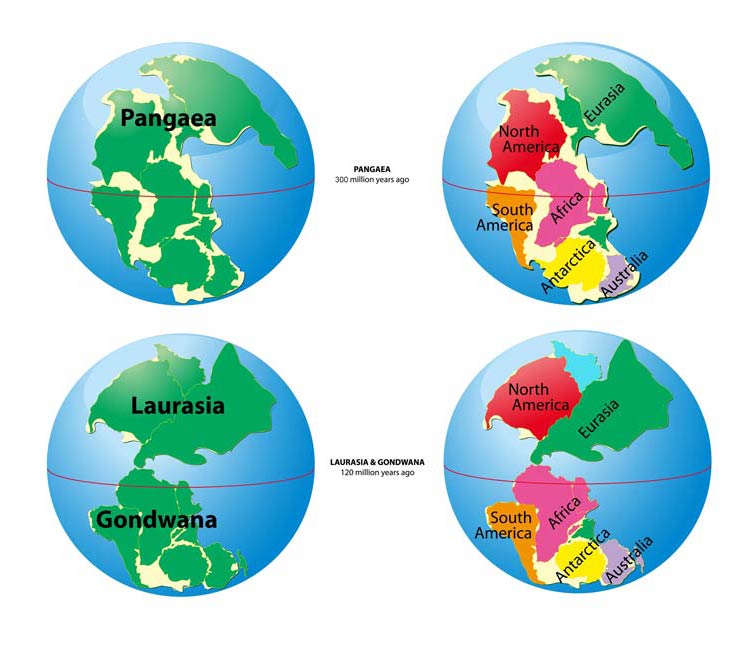
Tales of Moss and Fern
Although it’s hard to believe, some plants that proudly covered the Earth during the Triassic Period can still be found today. An example of a plant that has survived for over 200 million years is the fern (Polypodiopsida). While the specific fern species from the Triassic are now considered extinct, modern ferns look very similar, though they are significantly smaller. The leaves of prehistoric ferns ended with ovules. These plants could reach monstrous sizes, with the largest growing up to 10 meters (32.8 feet) tall.
However, research into prehistoric vegetation suggests that smaller ferns also existed on Earth back then, much more similar in form and size to those we know today. The Triassic landscape was primarily dominated by non-flowering plants. This included a wide variety of gymnosperms, which were the most successful plant group of the Mesozoic Era. Dinosaurs would have encountered diverse forests of conifers (Coniferales), including early forms of pines, firs, and spruces. Ginkgoes (Ginkgoaceae) and cycads (Cycadales) were particularly abundant, forming a significant part of the understory and mid-canopy in many regions. These hardy plants were well-suited to the generally drier, more continental climate of Pangaea.
Additionally, horsetails (Equisetaceae) and clubmosses (Lycopodiaceae) were common, thriving in more humid or swampy areas. Unlike modern forests, the Triassic flora lacked flowering plants (Angiospermae), which would only emerge much later in the Cretaceous Period. The prevalence of gymnosperms meant that the primary food sources for many herbivorous dinosaurs were seeds, cones, and tough, fibrous leaves, shaping their digestive systems and feeding behaviors. This ancient vegetation laid the groundwork for the more complex ecosystems that would flourish in the subsequent Jurassic and Cretaceous periods.
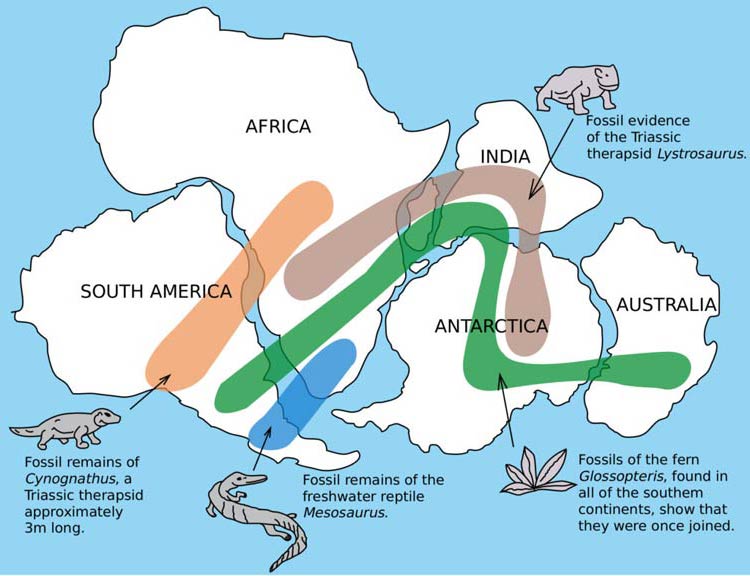
Pangaea
Not only did the natural environment look different, but Earth itself did too. The first great reptiles that inhabited our planet actually had only one continent at their disposal. This was because from about 335 million to approximately 175 million years ago, a “supercontinent” called Pangaea existed on our globe. The name comes from Greek and means “all-earth.”
All the continents then formed one gigantic landmass, surrounded on all sides by a single ocean, known as Panthalassa. Besides this “supercontinent,” there was no other significant landmass on Earth. The existence of a single supercontinent significantly impacted global climate patterns. Far from the coasts, the interior of Pangaea experienced extreme continental climates, characterized by hot, arid conditions with vast deserts, particularly in lower and middle latitudes. This strong seasonality and dryness greatly influenced the distribution and evolution of Triassic life forms, favoring species adapted to these harsh conditions.
Interestingly, the Triassic Period was the last period when Pangaea remained largely intact. During the Jurassic Period, the landmass began to break into two major parts: Laurasia to the north and Gondwana to the south (the movements leading to its breakup actually started in the Late Triassic, with rifting along what would become the Atlantic Ocean). Pangaea finally separated during the Cretaceous Period, giving rise to the continents we recognize today. The fragmentation of Pangaea led to significant changes in ocean currents, global climate, and ultimately, the diversification of life on Earth.

Mass Extinction
The Late Triassic unfortunately wasn’t kind to marine animals. Approximately 200 million years ago, the so-called Late Triassic extinction event began. The devastation particularly affected marine environments, with an estimated 80% of all marine species going extinct.
Many mollusks (Mollusca), brachiopods (Brachiopoda), ammonites (Ammonoidea), and reef fauna disappeared. This event marks a clear boundary in the fossil record, significantly altering the composition of marine ecosystems.
The primary cause of this extinction is widely attributed to massive volcanic activity associated with the breakup of Pangaea, specifically the formation of the Central Atlantic Magmatic Province (CAMP). This colossal outpouring of lava and gases, occurring over hundreds of thousands of years, led to significant environmental disruption. In connection with this intense volcanic activity, a severe climatic collapse occurred, characterized by a rapid and substantial increase in atmospheric carbon dioxide (CO₂). This triggered a pronounced greenhouse effect, leading to global warming, ocean acidification, and widespread anoxia (lack of oxygen) in marine waters. These combined stresses were devastating for many marine organisms.
This was another mass extinction within 50 million years, following the Permian extinction event (at the Permian-Triassic boundary), which was even more catastrophic. The Permian-Triassic extinction saw nearly 90% of marine species, 60% of reptiles and amphibians, and 30% of insect orders die out. Interestingly, volcanism is also cited as a primary cause of that earlier, larger event. While the Late Triassic extinction was severe, it paved the way for the rise of dinosaurs, which, being predominantly terrestrial, were less impacted than marine life and went on to dominate the Jurassic and Cretaceous periods.
Detailed Data
Triassic Period
- Average Temperature: 17 °C (62.6 °F), currently 13 °C (55.4 °F)
- Oxygen Content: 16% (currently 20.9%)
- Carbon Dioxide Content: 0.175% (currently 0.04%)
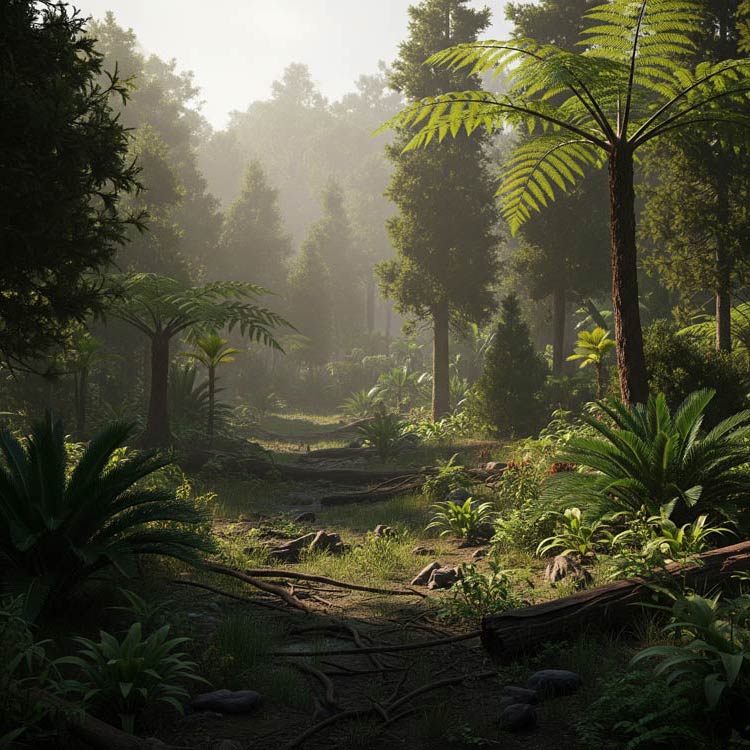
Stratigraphic table of Mesozoic era
| Era | Period | Epoch | Age | Years ago |
| Mesozoic | Cretaceous | Late Cretaceous | Maastrichtian | 66 043 000 – 72 100 000 |
| Campanian | 72 100 000 – 83 600 000 | |||
| Santonian | 83 600 000 – 86 300 000 | |||
| Coniacian | 86 300 000 – 89 800 000 | |||
| Turonian | 89 800 000 – 93 900 000 | |||
| Cenomanian | 93 900 000 – 100 500 000 | |||
| Early Cretaceous | Albian | 100 500 000 – 113 000 000 | ||
| Aptian | 113 000 000 – 125 000 000 | |||
| Barremian | 125 000 000 – 129 400 000 | |||
| Hauterivian | 129 400 000 – 132 600 000 | |||
| Valanginian | 132 600 000 – 139 800 000 | |||
| Berriasian | 139 800 000 – 145 000 000 | |||
| Jurassic | Late Jurassic | Tithonian | 145 000 000 – 152 100 000 | |
| Kimmeridgian | 152 100 000 – 157 300 000 | |||
| Oxfordian | 157 300 000 – 163 500 000 | |||
| Middle Jurassic | Callovian | 163 500 000 – 166 100 000 | ||
| Bathonian | 166 100 000 – 168 300 000 | |||
| Bajocian | 168 300 000 – 170 300 000 | |||
| Aalenian | 170 300 000 – 174 100 000 | |||
| Early Jurassic | Toarcian | 174 100 000 – 182 700 000 | ||
| Pliensbachian | 182 700 000 – 190 800 000 | |||
| Sinemurian | 190 800 000 – 199 300 000 | |||
| Hettangian | 199 300 000 – 201 300 000 | |||
| Triassic | Late Triassic | Rhaetian | 201 300 000 – 208 500 000 | |
| Norian | 208 500 000 – 227 000 000 | |||
| Carnian | 227 000 000 – 237 000 000 | |||
| Middle Triassic | Ladinian | 237 000 000 – 242 000 000 | ||
| Anisian | 242 000 000 – 247 200 000 | |||
| Early Triassic | Olenekian | 247 200 000 – 251 200 000 | ||
| Induan | 251 200 000 – 251 902 000 |
Recommended
- Pangaea (Pangea)
- Gondwana
- Triassic Period
- Jurassic Period
- Cretaceous Period
- Mass Extinction
- History of animals and plants extinction
- Extinction of dinosaurs. Why are they extinct?

